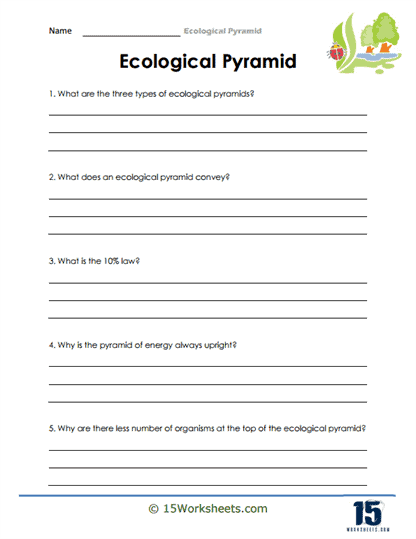About These Pyramids

Worksheet Description
This is a good worksheet for either introducing or reviewing this concept with students.
The worksheet is a series of open-ended questions designed to assess a student’s understanding of the foundational concepts surrounding ecological pyramids. It delves into the different types of ecological pyramids, the information they represent, the significance of the 10% law, the orientation of the energy pyramid, and the reasons behind the diminishing number of organisms at higher trophic levels. Each question prompts the students to recall and articulate their knowledge about various facets of the ecological pyramid in a concise manner. With graphics and a structured layout, the worksheet provides a straightforward means to gauge comprehension and reinforce the key principles of ecological pyramids.
To effectively tackle this worksheet, students should start by reviewing their notes or textbook content related to ecological pyramids to refresh their memory. After reading each question carefully, they should contemplate the core concepts being addressed and formulate a comprehensive answer that accurately depicts their understanding. It’s crucial for students to ensure their responses are both precise and coherent, making certain to cover the fundamental aspects of each question. Once all questions are answered, students can cross-check their responses with their study materials or discuss with peers to verify their accuracy.
The primary objective of this worksheet is to enhance students’ comprehension of the vital aspects of ecological pyramids. By posing these questions, the worksheet pushes students to think critically about the composition, structure, and function of different ecological pyramids. Furthermore, it aims to instill a thorough grasp of the 10% law and its implications for energy transfer across trophic levels. Ultimately, this activity seeks to fortify students’ conceptual foundation regarding ecological pyramids, ensuring they can confidently explain, interpret, and apply their knowledge in various contexts.
